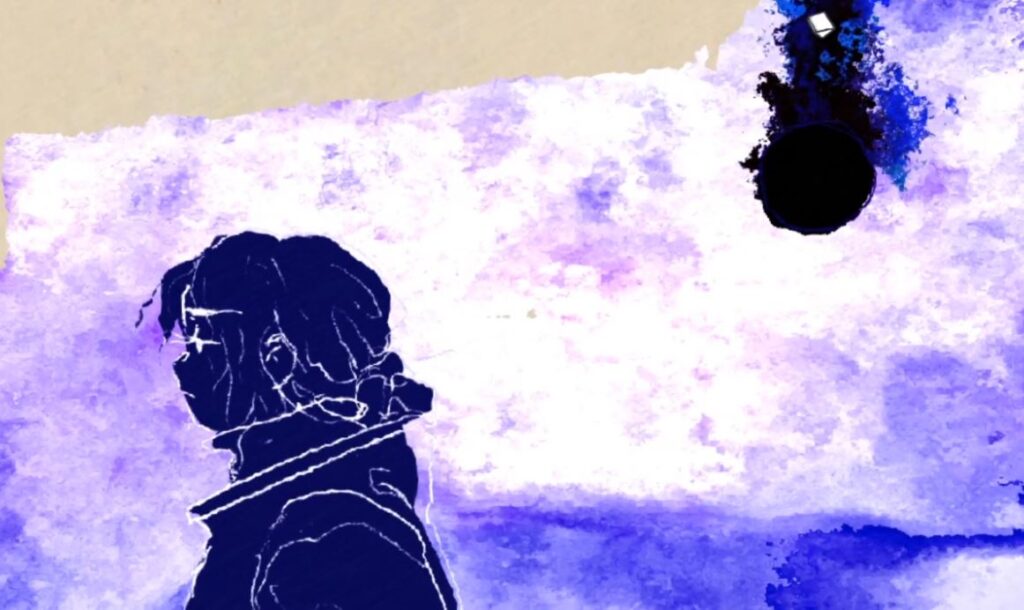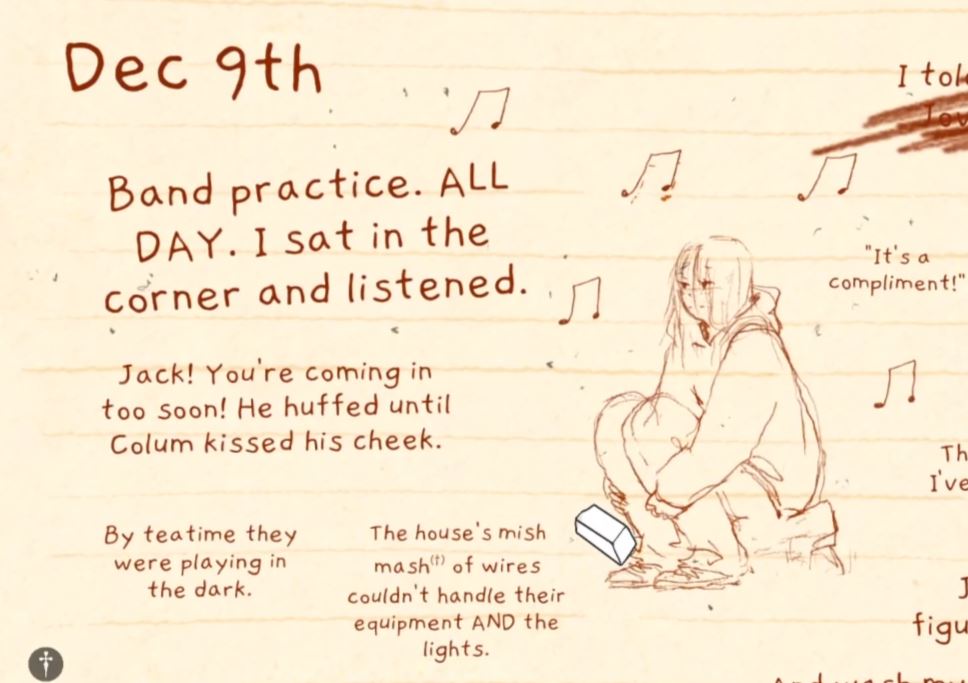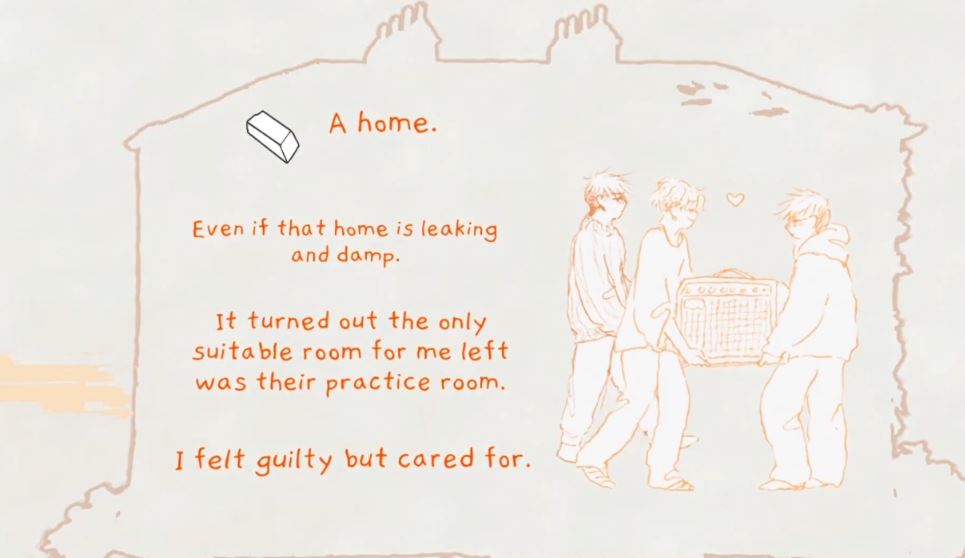
How If Found’s authenticity gives genuine, trans hope
I have always enjoyed seeing queer characters in in shows like She-Ra and games like Heaven Will Be Mine. It’s exciting to see queer characters come together in their comradery, friendships, and romances. These queer media exist in metaphors and utopias. Places for queer audiences to dream of ways of being from the inspiration of seeing alternatives to our world and finding poetic meanings from the possibilities of the fantastic. These places also exist in contrast to the dominant heteronormative media, to give queer audiences a chance to see themselves. Yet, personally, I don’t see my own hope in these worlds.
For many of these characters, the conditions which produced their trans bodies are different from our own. The material conditions of living, the politics of their communities, and the meaning of being queer is something very different. While I recognize the meaning that can come from these differences, I can only ever find so much emotional resonance in these media.
In contrast, I find flipping through the journal pages of If Found to contain something severely authentic. As though the stories of the characters are being lifted word for word from the journal of a Kasio somewhere in reality. I don’t have to imagine how I can relate to this character. Kasio runs through me. She runs through my experiences, friendships, homes, histories, joys, pains, and relationships. Kasio isn’t just a character I am witnessing but a conversation with someone who has lived similar lives to my own.
I’m thinking about this as I practice voice training while I do the dishes. It’s a daily routine. One where I can just let my mind wander while I play with the noise coming from my mouth. During this time I am thinking of the moments leading up to the climax of If Found and how it relates to my embodiment as a trans non-binary woman with anxious-depressive disorders.
“Ho, Hue, Who, Heh, Hah, He.“

Towards the end of If Found Kasio, the protagonist, isolates herself to the point of blacking out. After running away from a home where she isn’t accepted for who she is, and rejecting the romantic gesture of a roommate in her queer squat, she feels helpless. She reaches a point of feeling like she has only caused harm and can’t find anywhere she belongs.
“My chest feels tight, and my body hurts,” reads one entry. This moment makes my own chest feel like it’s about to explode.
There is something very trans about the human chest. Hormones and surgery reshape the flesh. The clothing one wears hides or reveals it. I am starting to wear a bra because my estradiol has shaped my tits to antennas, making them obvious with any top I wear. I’m also learning how adapting my breath changes my voice. I’m honestly not sure if it’s something I want, but I know my current voice feels bad.
On top of all these personal changes also comes the emotional weight that you learn to carry in your chest. This comes in the form of losing breath when someone uses my trans identity as a weapon against me, the anxiety held walking into public spaces alone, listening to someone explain how my ideas of gender are wrong.
All together, these experiences create a tension in my chest. It’s a physiological experience. It’s a combination of my emotions excited for a future where I am comfortable, and the exhaustive history of work it has endured.
“Harry is a hairy boy. Harry is a hairy boy. Harry is a hairy boy.“
A large reason I feel authenticity in If Found is due to the grounded narrative. While it isn’t “slice of life”, the characters all exist in the realm of the ordinary. The story isn’t always pushing Kasio to solve her problems. She sits down and watches the band practice for hours into the night. She makes hot chocolate for everyone in the house so they can watch movies together. Alongside these moments, we also see the little side-thoughts Kasio has about the post-office or her mom’s cooking.

Kasio doesn’t only exist as a problem to be resolved. She is a life which we as players have the privilege of looking into. This comes with moments important and unimportant, good and bad, emotional and indifferent. Rather than seeing Kasio as a character, another person’s digitized existence becomes the subject of play. This isn’t the first time developer DreamFeel has designed like this. Curtain, which follows the story of an abusive relationship, similarly structures the ordinary with the dramatic to create a form of existential play.
From designing the game with these details included, the creator is opening up in an extremely vulnerable way. Vulnerable not just because of the reproductions of trauma, but because of the inclusion of life’s intimate parts that are inseparably linked to that trauma. Kassio doesn’t just feel pain from the alienation in Achill, her pain comes from these moments of joy that have malformed into estrangement. As a player genuinely playing with that vulnerable existence, we open up our own vulnerabilities to interweave with those we are playing.
Outside of the ordinary, the braided connections between transitioning and temporality are a large part of Kasio’s vulnerability.
Being trans means breaking away from the cisnormative structures of time. A point where the cisnormative ways of experiencing time must change in order to realign with the ways one sees themselves. As Ruth Pearce writes, “…I am 10 years old, 14 years old, and 30 years old.”
Breaking that time may mean going through a second puberty on hormones, going through a rapid series of fashion phases to explore freedoms not previously had, or even relearning what people/spaces you choose to traverse in the world. There are far too many examples that could be used. Trans time is the experience of simultaneously being at the beginning, in between, and ending moments of your life all at once.
Trans time is an element put front and center of If Found. As the player goes through Kasio’s journal with an eraser, they are interfacing with time that has been materialized as an archive. Scribbles are removed to reveal images and words that Kasio once held intimately in the past. Now, in the moment of the game, many of these entries only bring pain.

Upon close inspection, it can be seen that throughout the entire game the erasure is happening in the events at the end of the story. Kasio is locked in the house alone and ripping up her journal. However, this detail is easy to miss. Most of the time when the journal is framed, the pages fill the entire screen view. Intercut between these pages of erasure are evoked moments of the past. The interface of the eraser is replaced with a cursor to click through or drag. Different from the pages of Kasio’s journal, these are memories resurfaced, moments that have already passed. Time is twisted so that we are simultaneously experiencing a linear series of images and words following Kasio’s return to Achill while sitting in the painful climax of erasure all at once.
Within many of these images, the shape of the home reappears. At times, it is the home of Kasio’s mother. When we see this home is never with great detail. In the beginning of the game it’s far away, with Kasio trekking on the long path towards it. When Kasio and Anu go to break into the house, it’s a shadow breaking the peaceful screen of the snow. There are no details of the material or light from the windows. It’s just a dark void. She talks about her old room and what it meant to her. “This room never really felt like mine. All my clothes were things other people thought I should like. I didn’t care enough to have an opinion. Maybe this room lacks identity because it always had to be ready for guests.” Later for Christmas dinner, the home drawn with crayons, the lines wobbling like the structure of the house is going to collapse.
After running away, the abandoned home that Kasio stays at becomes a returning interface. There is a lot more detail given to the abandoned house compared to mom’s house. Cracks run from the bottom to the center of the stone walls, like veins rather than flaws. Vegetation has overtaken about a fourth of the other walls. The rooftop has a hole that doesn’t look poor, but rather charming.
The abandoned house is given a lot of time for the player to observe. Many conversations begin and end with a character looking out the window. When night time comes, the player must erase multiple frames of the sunset painting the house blue. There are even moments where the characters are framed together within the shape of the house. Where Kassio’s family home was negative space in the frame, the abandoned house is a place that expresses emotion. The abandoned house becomes a place worth loving the details, because there is a capacity to care and love within.

Only at the climax of the game, with Kasio falling apart from not caring for herself, does the house fall away. The walls are erased, and the flames consume the Earth. It’s the last place that stands as the world falls apart.
Kasio says near the end of her stay, “…houses don’t fall apart all at once. They do it slowly, piece by piece, room by room.”. People don’t change all of a sudden, it’s a process that takes time. Sometimes that involves the pain of something familiar and old falling apart so something new can take its place.
In Asimov’s short story, The Last Question, he tells the story of the last humans trying to reverse entropy. How can the inevitable chaos and disintegration of the world be changed to prevent the end of life? What results is the birth of new life from the extinction of the last humans. From an ending, brings new beginnings.
Early in the game, Anu hands Kasio a book by Asimov to read. She’s read it before, but wouldn’t mind reading it again. Perhaps it’s good material for the fiction she is writing about a girl travelling into the ruptures of space-time. It’s also a good metaphor for If Found’s trans narrative.
All of this destruction, erasure, and twisting of time maintain a theme of entropy. A signal of existence in forms that do not produce, but exist in destruction of the organized and meaningful. Kasio does not have an easy or safe time being herself in her hometown. She gets looks from everyone on the road and at pubs. Her family repeatedly places blame on her for their own violent ignorance. The only way to survive these pains is for Kasio to find something to destroy. The old relationships must be sundered in order to be changed.
In this I find the deepest connection with If Found. So many parts of my own transition, and many others I have known, come with similar forms of destruction and loss. Family members, friendships, homes, jobs. It isn’t new to say that each of these can become endangered sites of pain or violence for many trans people. Yet, there is no other option of being because that would ask us not to exist. So from the ruins of the past, we can only become anew.If Found opens these vulnerable pages to allow a deep connection to the life of Kasio. In this opening of vulnerable creation, there is an opportunity to connect deeply with our own experiences. Maybe those aren’t constructive, dramatic, easy to understand, or linear. Maybe they never will be. But If Found accepts and understands that all of these complexities are part of living as a trans person. That’s probably the most I could ask from my media: to ask me to keep on breathing.







